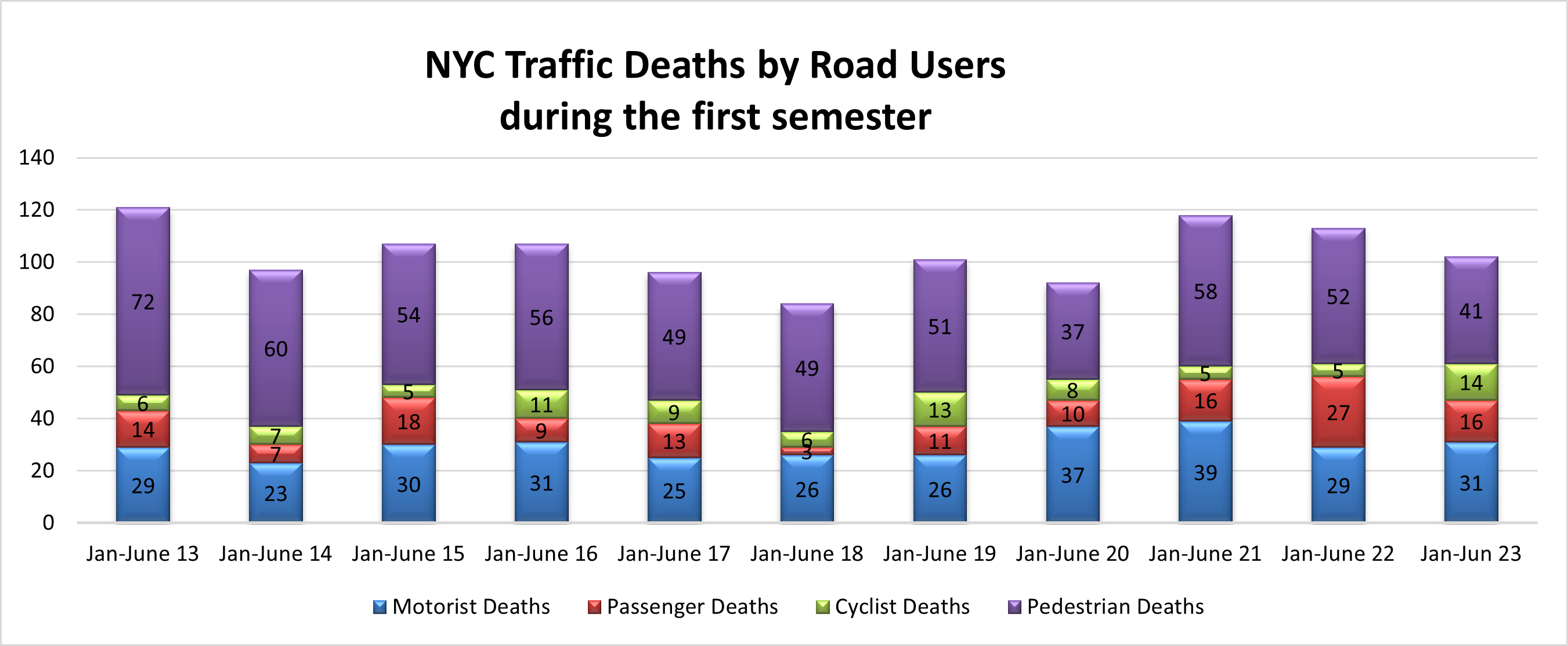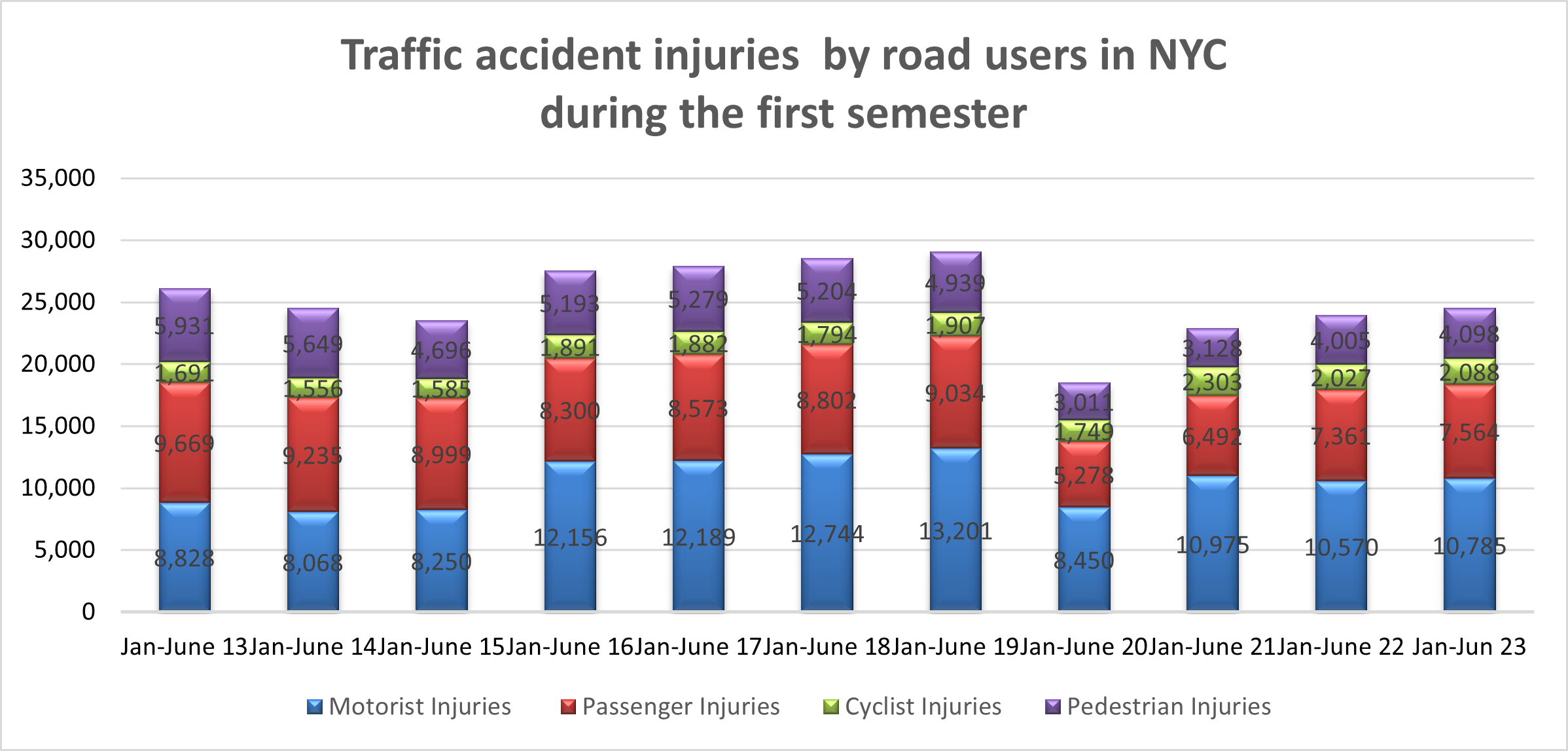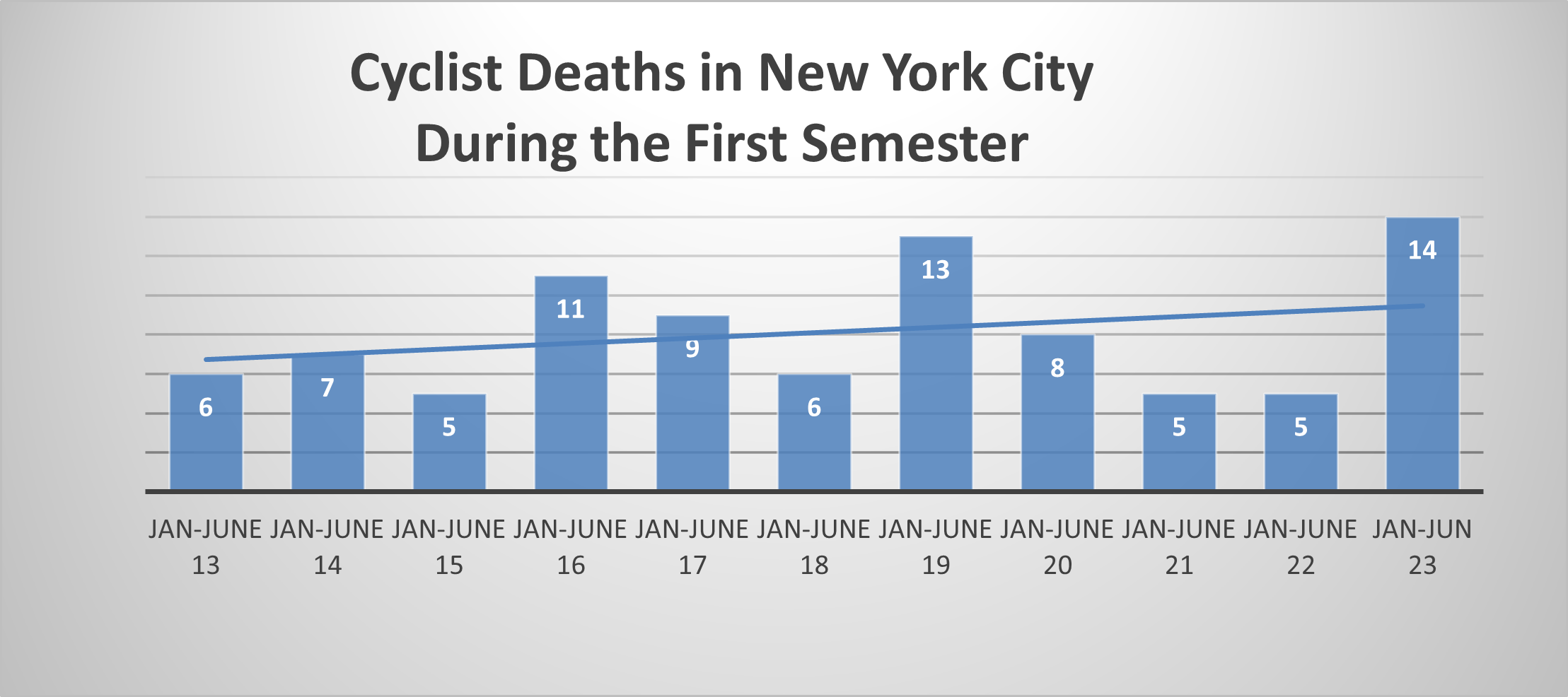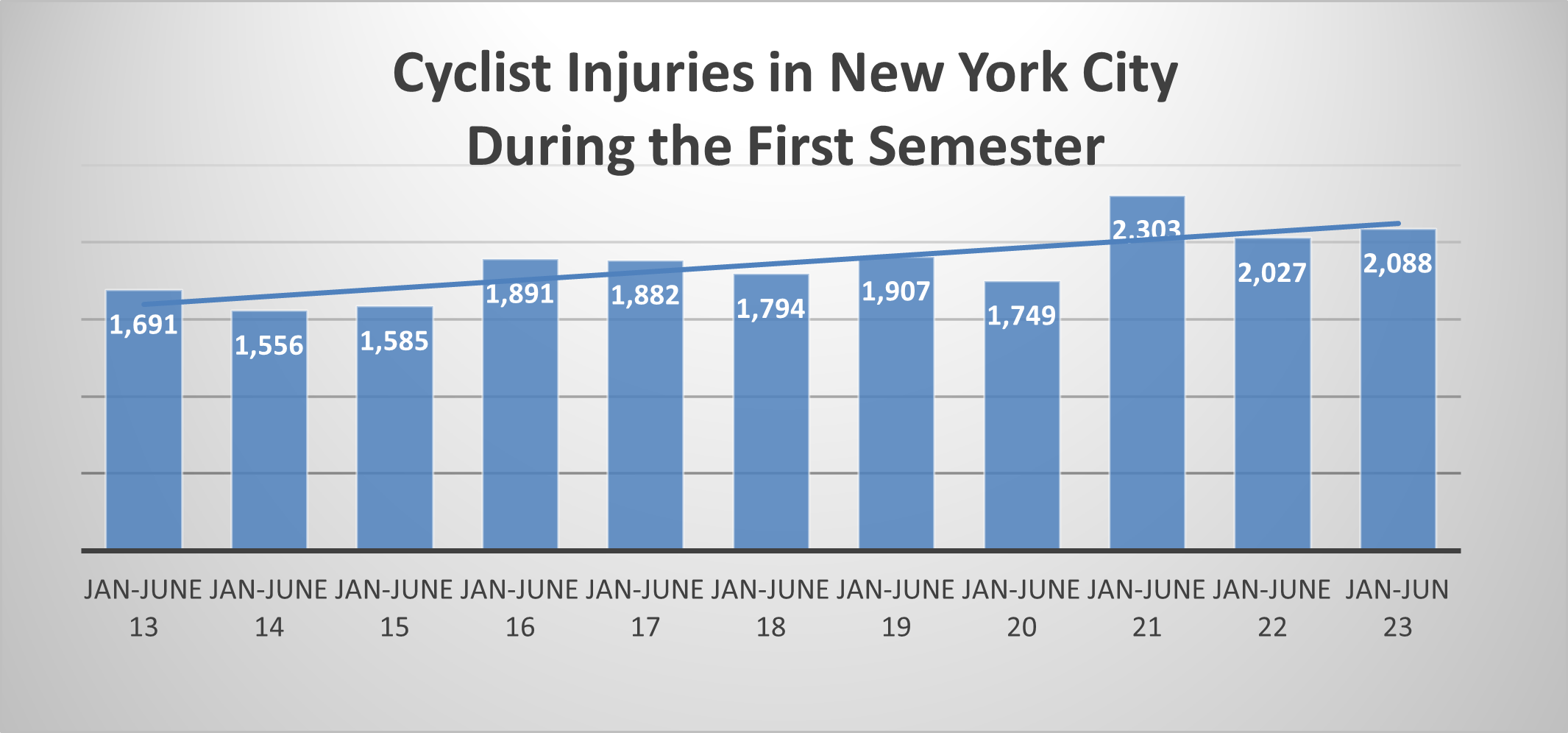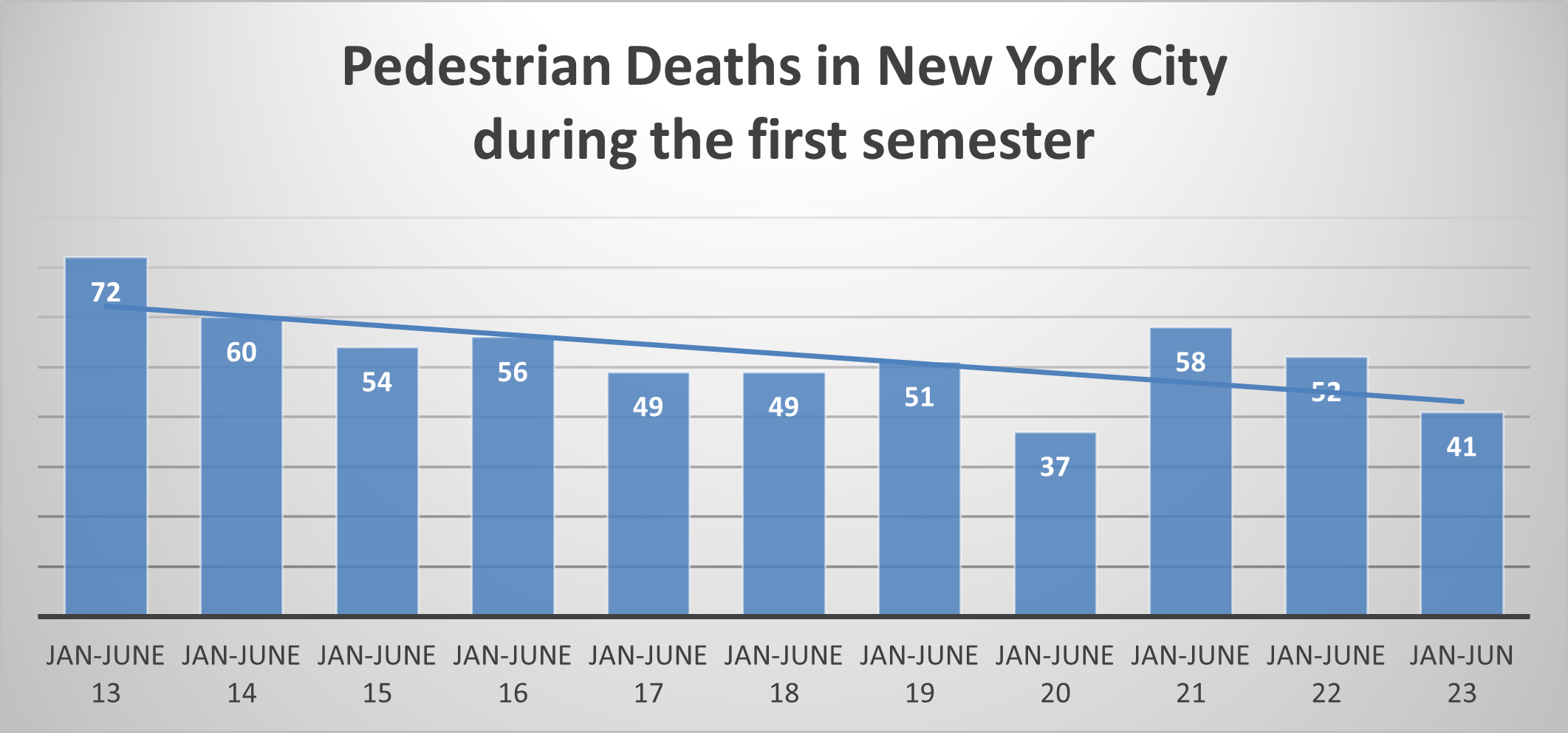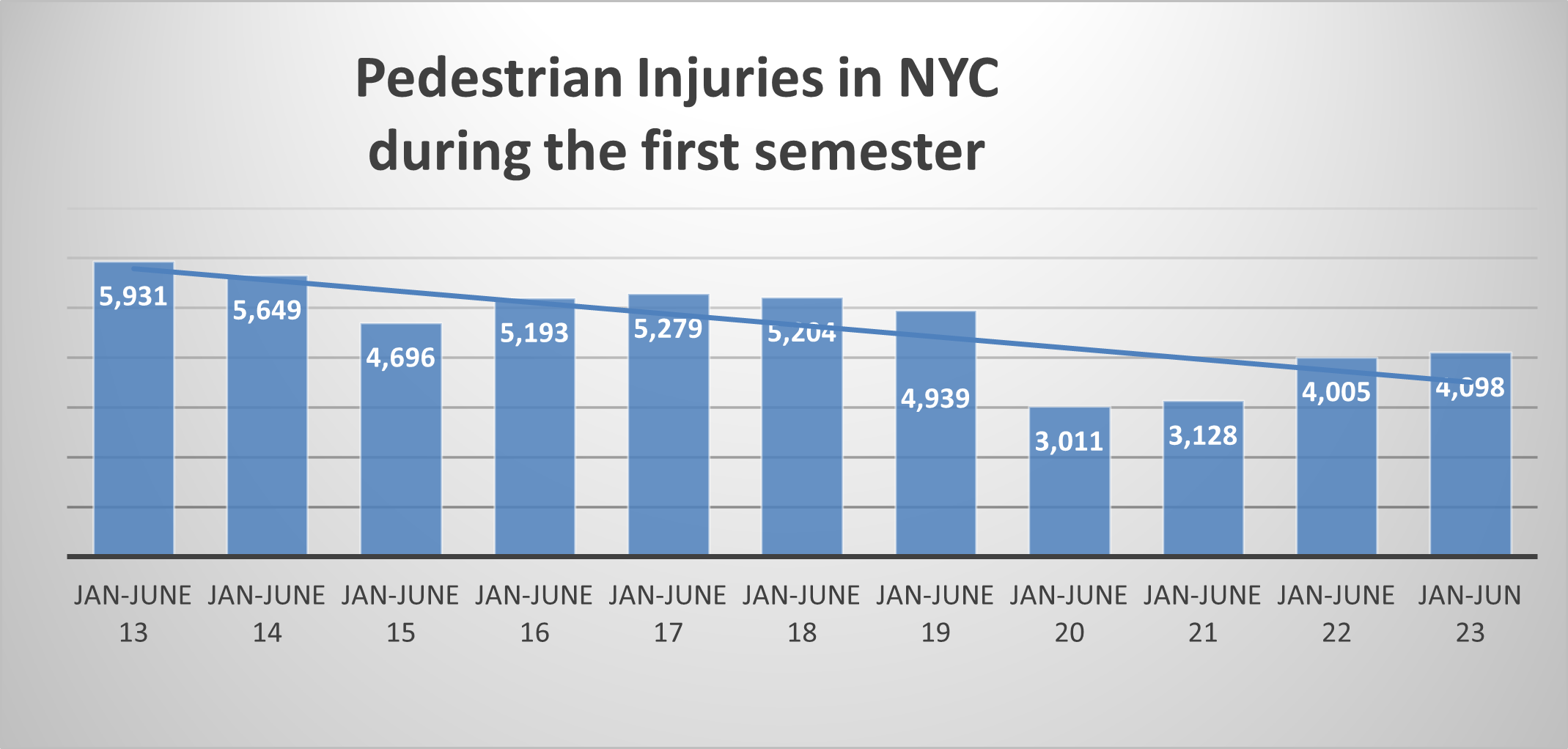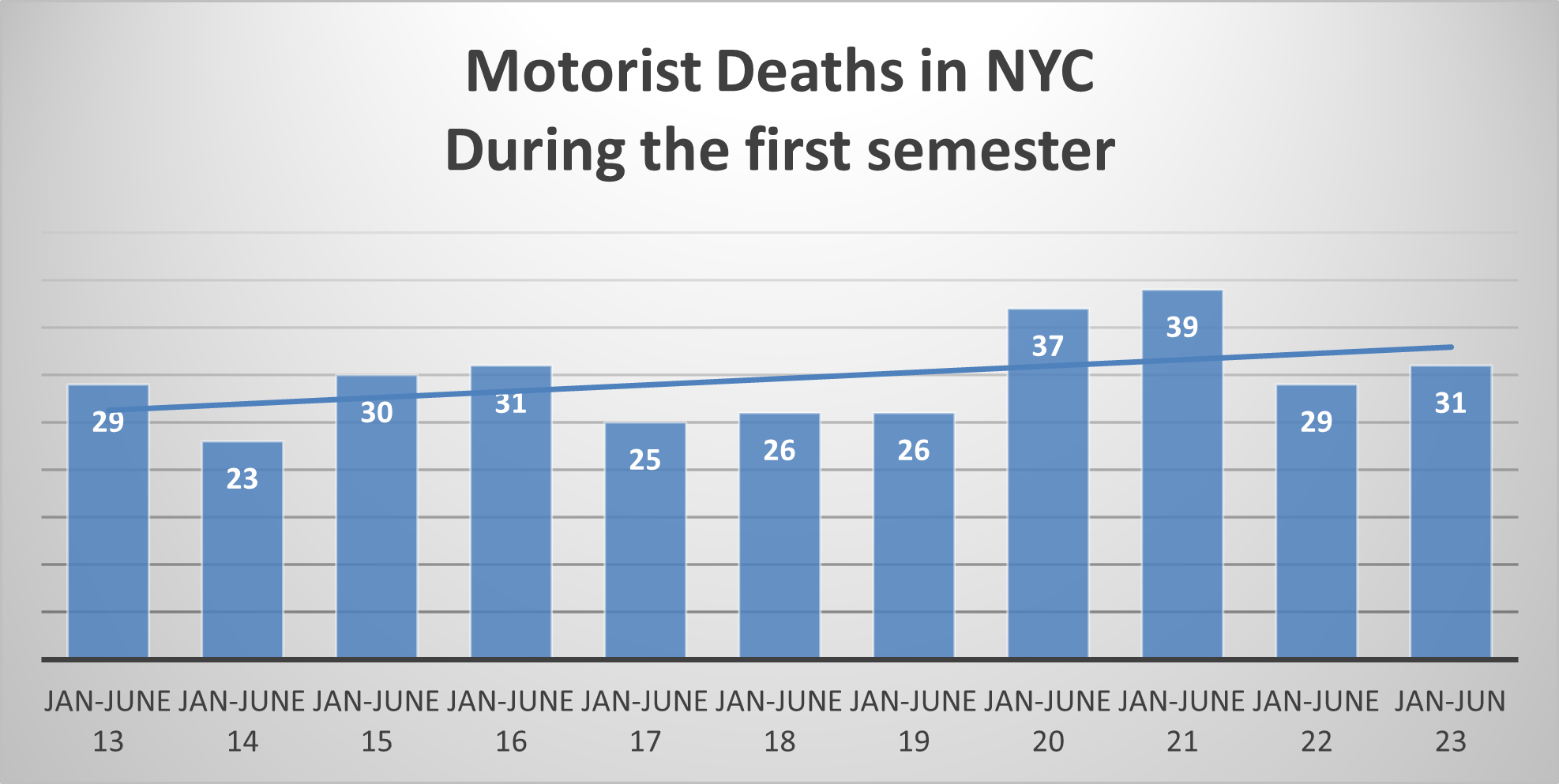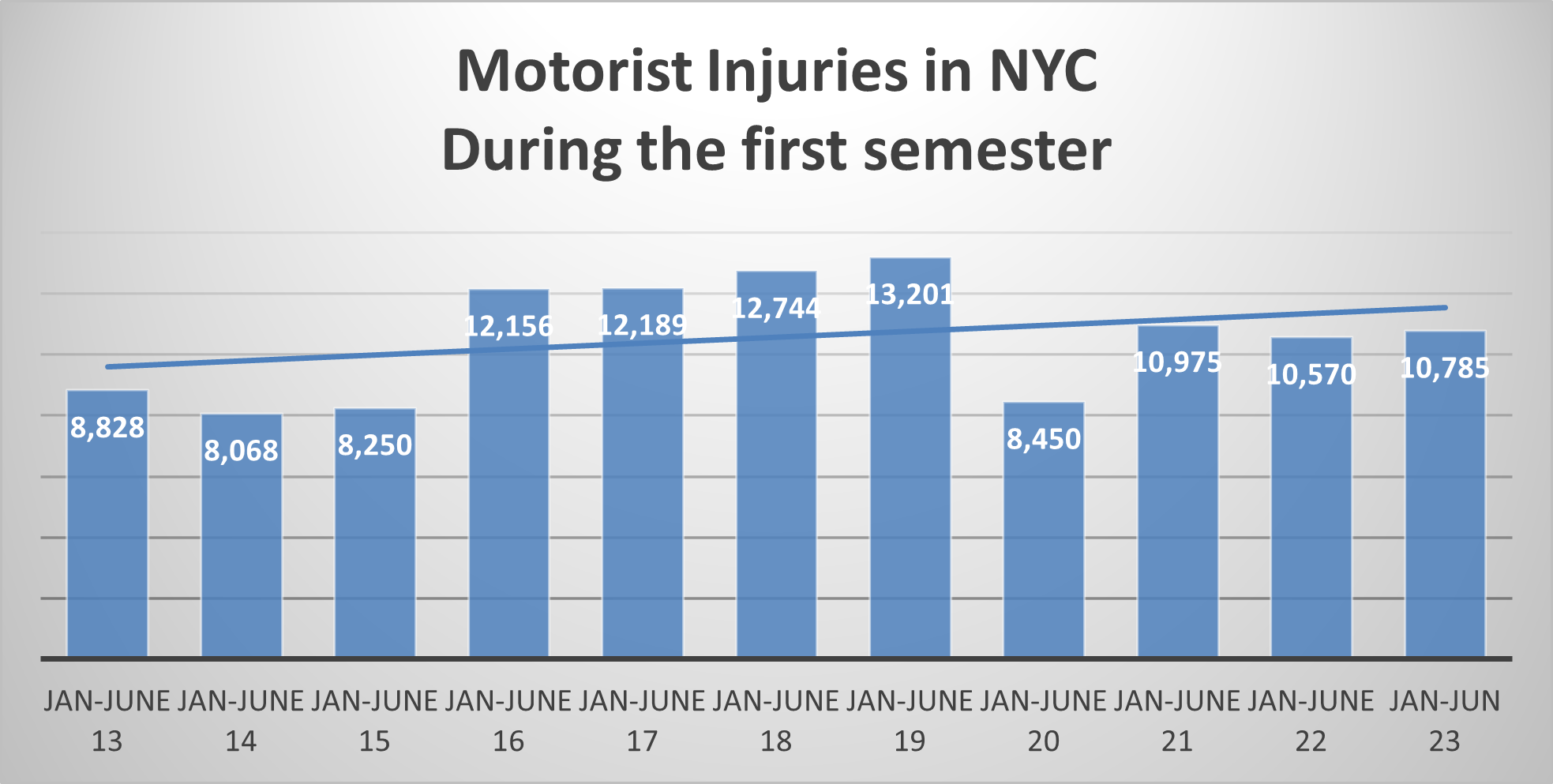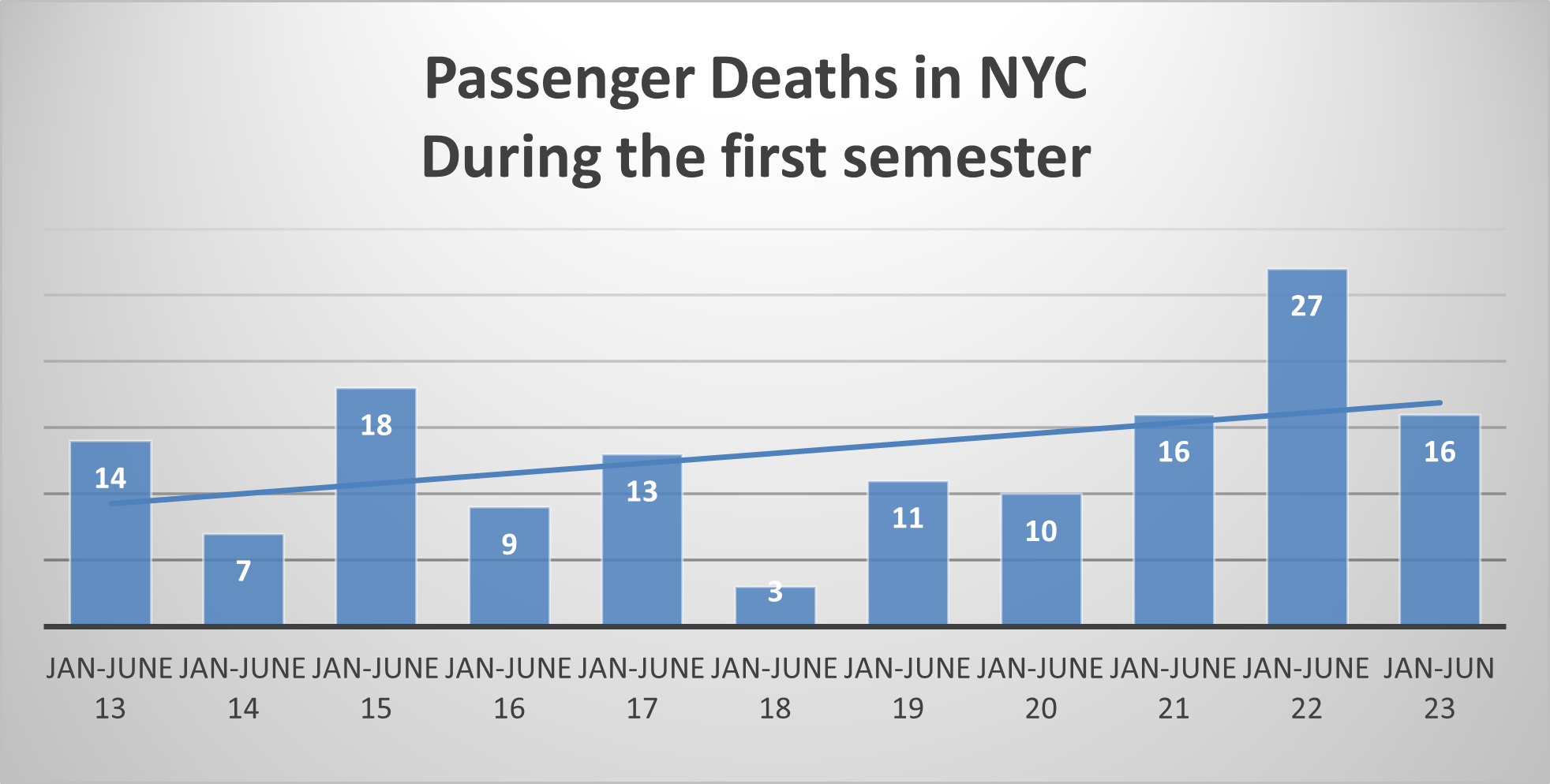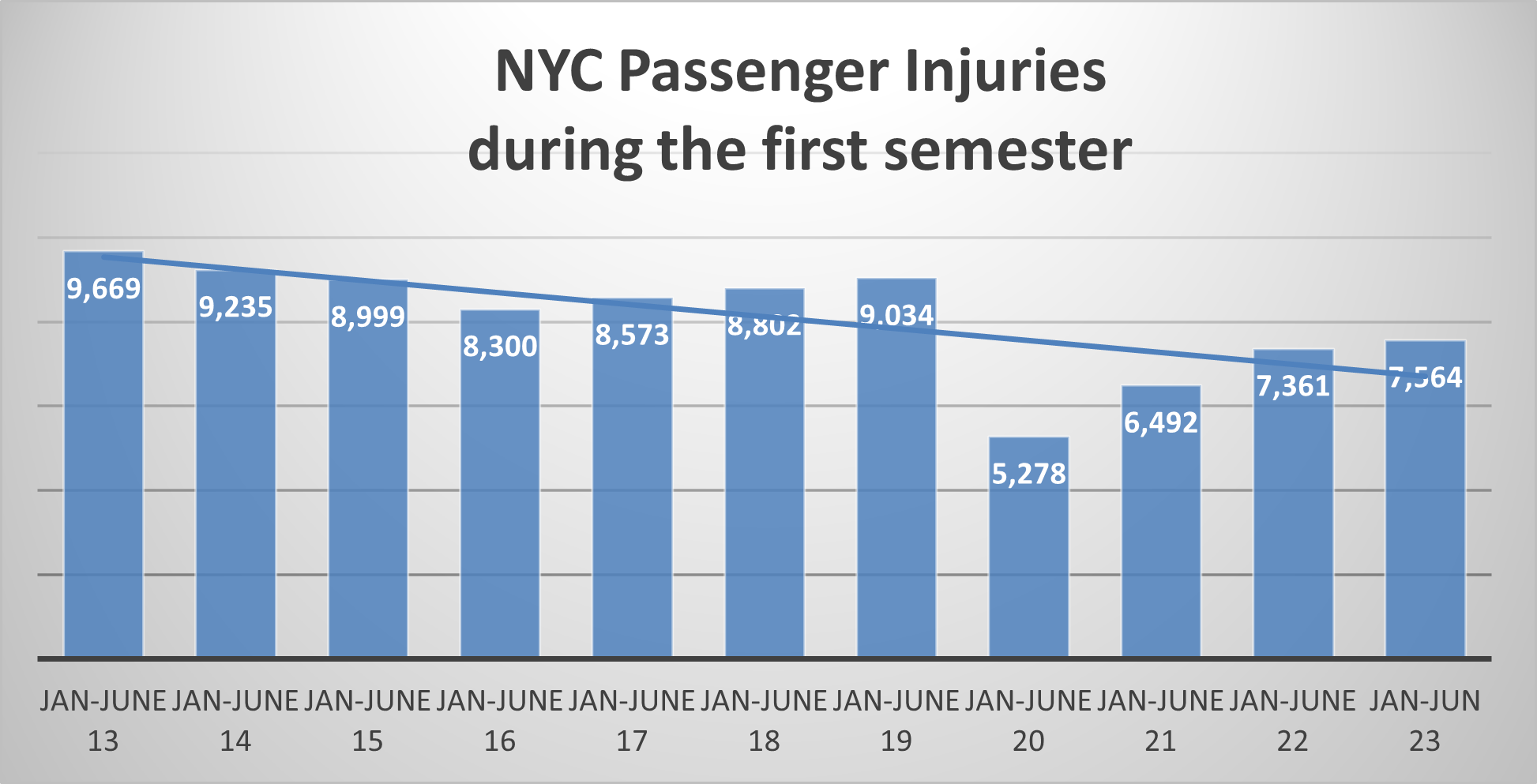NYC Crash Fatalities Back to Pre-pandemic Numbers, Except for Cyclist Deaths at a Record High
When the total number of crash fatalities during the first semester of 2023 is lower than the previous years, one category of road users, the cyclists, had a record number of fatalities with 14 deaths. Pedestrian fatalities were lower than usual with 41 fatalities. The NYPD also recorded 31 driver fatalities and 16 passenger fatalities for the first semester of 2023.
After two years of an unusually high number of auto accident fatalities in New York City during the first six months of the year, the total number of crash fatalities for the first six months of 2023 was pretty much similar to the levels observed before the Covid19 crisis, oscillating around 100 for the first six months of the year. In 2023, 102 people died in crashes during the first semester compared to 113, 118, 92, 101, 84, 96, 107, 107, 97, and 121 during the semesters of 2022, 2021, 2020, 2019, 2018, 2017, 2016, 2015, 2014, and 2013 respectively.
During the first semester of 2023, 24,535 people were injured in crashes. This number is slightly higher than the two previous years, during which 23,963 and 22,898 people were injured during the first semester of 2022 and 2021, respectively, but still lower than what it was before the pandemic when the number of traffic injuries for the first six months of the year was above 25,000. Among the category of road users, drivers were the most injured with 10,785 injured motor vehicle operators for the first semester, followed by passengers (7,564), pedestrians (4,098), and cyclists (2,088).
Preoccupying Number of Bicycle Accident Deaths and Injuries
Not only did the number of cyclists injured reached over 2,000 during the first six months of the last 3 years, but also the number of fatalities for the first six months of this year reached a record high with 14 people killed in bicycle accidents in New York City. This number is quite unusual when compared to the first six months of 2022 and 2021 when 5 cyclists died in crashes. Additionally, the number provided by the NYPD only shows the number of bicycle accidents involving another vehicle. Four other cyclists died in accidents not involving another vehicle.
According to Transportation Alternatives, among the 14 cyclists who died in crashes with another vehicle, 13 died on streets that didn’t have protected bike lanes. Protected bike lanes not only make the streets safer for cyclists but also reduce pedestrian fatalities. The New York City Street Plan, which requires the DOT to implement 30 miles of protected bike lanes in 2022 and then 50 miles yearly for 5 years, was signed into law in 2019. In 2022, Mayor Adams agreed to a $904 million investment to make this plan a reality; however, so far, only 9.7 out of the 50 miles legally required protected bike lanes have been installed. Mayor Adams has achieved only 10% of his campaign promise for 300 miles of protected bike lanes installed between 2022 and 2025. Additionally, many existing bike lanes are overcrowded, and with the rise in micro-mobility devices and bike lane users traveling at very different speeds, there is a need for wider bike lanes to ensure all users feel safe. Both cyclist injuries and deaths are on a rising trend in New York City.
Pedestrian fatalities at record low
On the other side, pedestrian fatalities and injuries in New York City are both on a declining trend, with pedestrian fatalities reaching a record low for the first 6 months of the year. 41 pedestrians died in accidents in New York City during the first 6 months of 2023 compared to 52 and 58 for the same period in 2022 and 2021, respectively. The only time this number was lower was in 2020 during the Covid-19 lockdown, which is statistically not comparable to any other year.
4,098 pedestrians were injured in traffic accidents during the first semester of 2023 compared to 4,005 for the same period a year earlier. Since the pandemic, the number of pedestrian injuries for the first 6 months of the year has been oscillating around 4,000. Before that, it used to oscillate around 5,000.
Motor vehicle operator fatalities and injuries are on a rising trend
31 motorists died in crashes during the first 6 months of the year compared to 29, 39, and 37 during the first semester of 2022, 2021, and 2020, respectively. While the recklessness observed during the pandemic has recessed, the number of motorist fatalities in the city remains high compared to the year preceding the pandemic. 31 deaths were actually the highest number of motorist fatalities recorded during the first semester of the year between 2013 and 2019. It was recorded during the first semester of 2016.
While the number of motorist fatalities remains elevated, the number of motorist injuries remains lower than what it was in the years preceding the pandemic.
The 10-year graph below shows a slight decline in motorist injuries after Vision started in 2014, then a jump in injuries in 2016. 2016 was also the year when Apple released three new iPhone models in a single year, and distracted driving exploded to levels never seen before. After that and until the 2020 lockdown, motorist injuries continued to rise and went above 13,000 for the first time during the first semester of 2019. It dipped to 8,450 during the Covid-19 crisis and went back up during the last 3 years but remained below the trendline and below 11,000. After the lockdown, many employers realized they could save money by reducing office space and keeping their staff working from home. As a result, fewer people are commuting daily to the city and getting injured while driving their cars.
Passenger fatalities back to “normal”
After a very uncommon first semester in 2022, during which 27 passengers died, passenger fatalities went back to 16 during the first semester of 2023. This number is still globally high compared to the previous 10 years but not as outrageous as the numbers recorded last year.
Passenger injuries are on a declining trend. While they used to oscillate between 8,000 and 9,000 before the pandemic, they remained below 8,000 for the last 4 years. Again, fewer people commuting to the city to go to the office might be a factor.
 New York Personal Injury Attorneys Blog
New York Personal Injury Attorneys Blog


